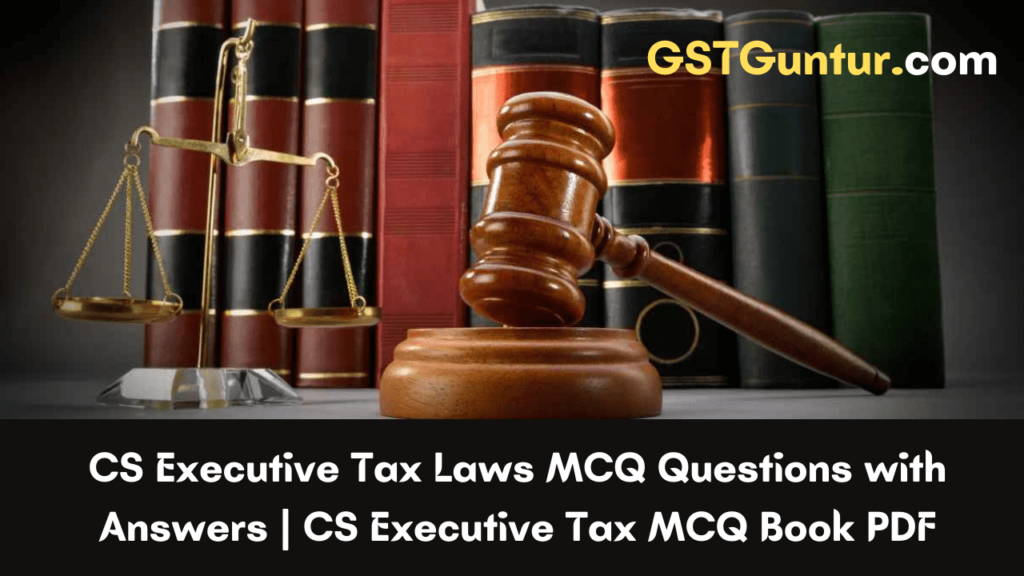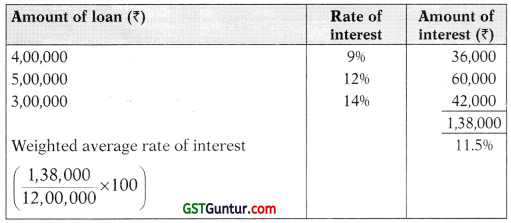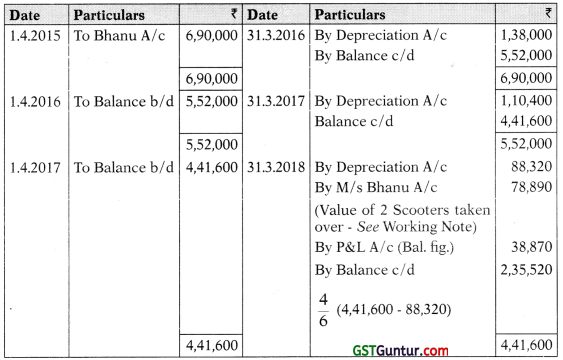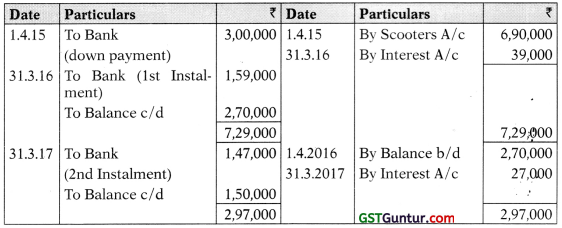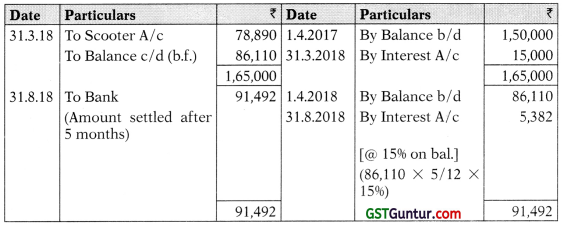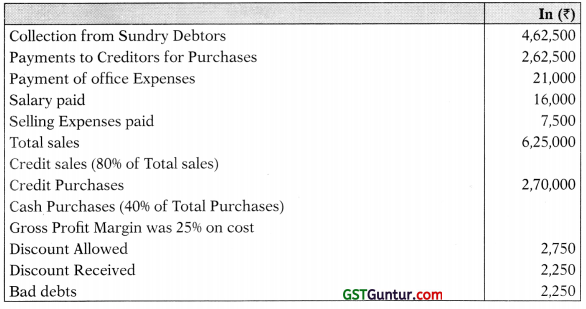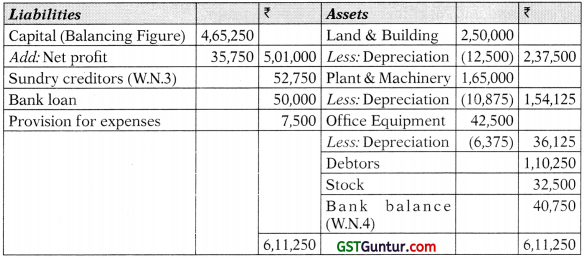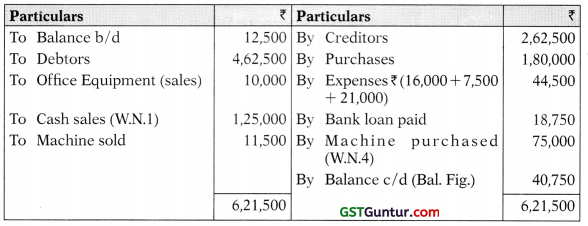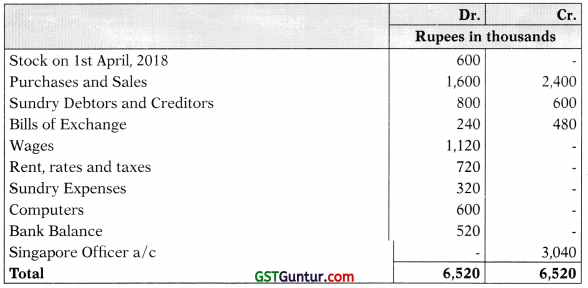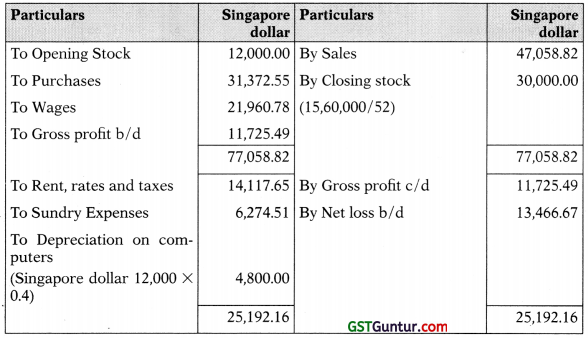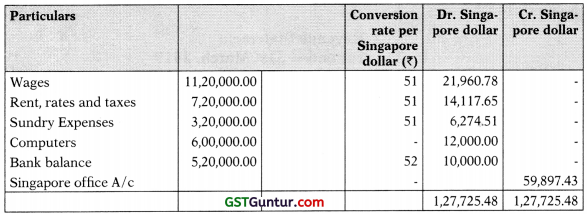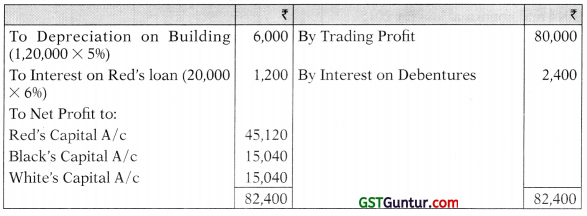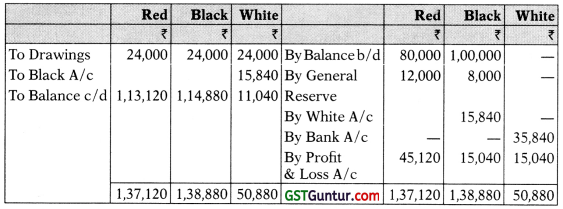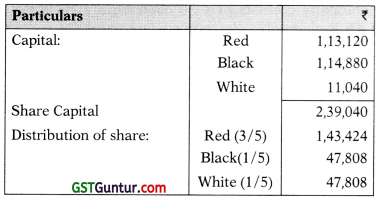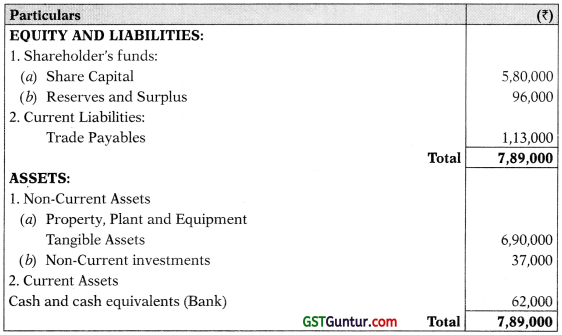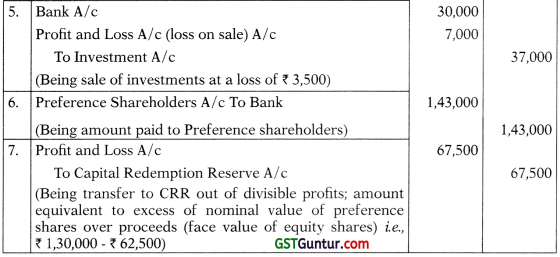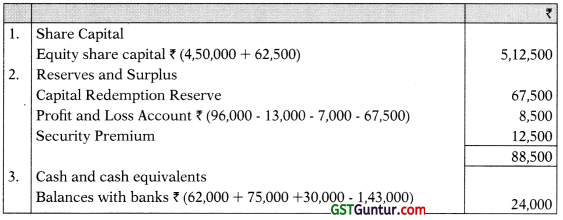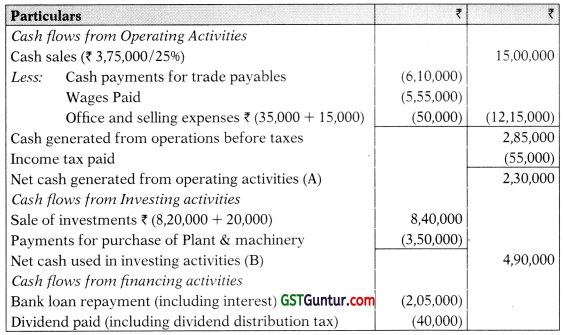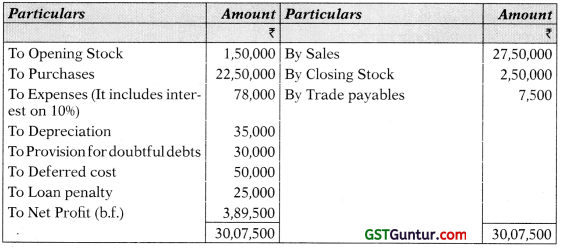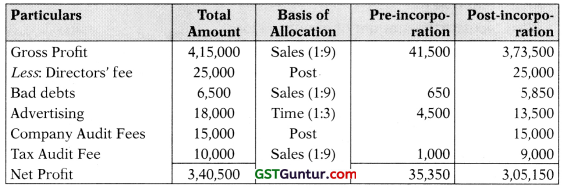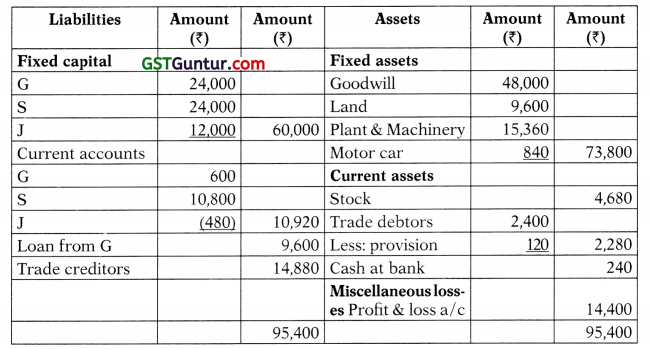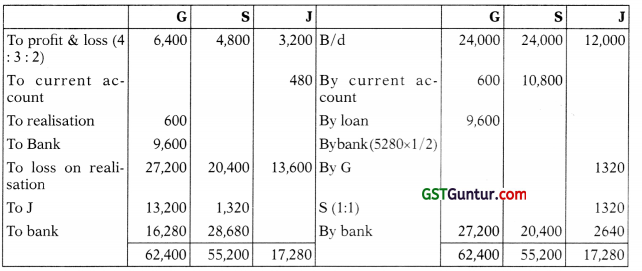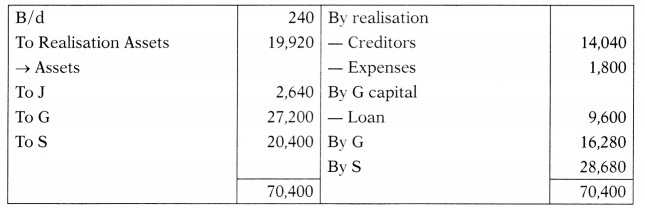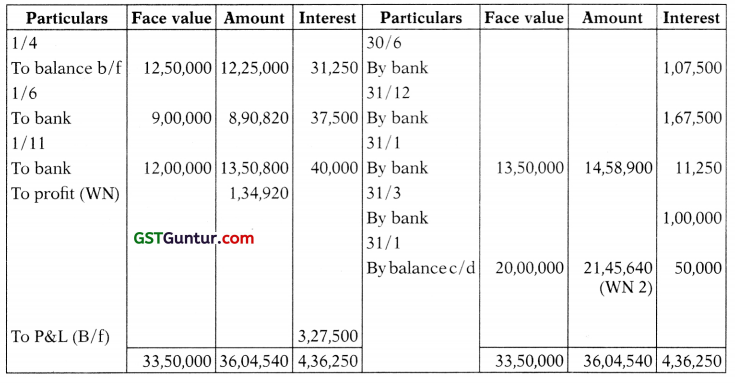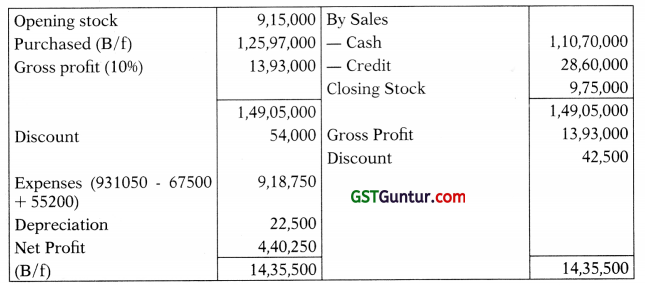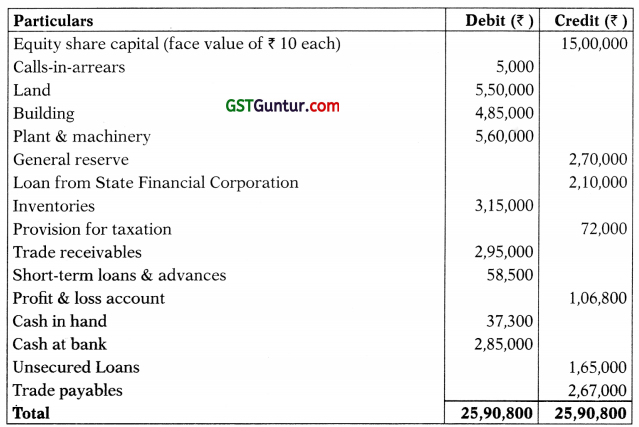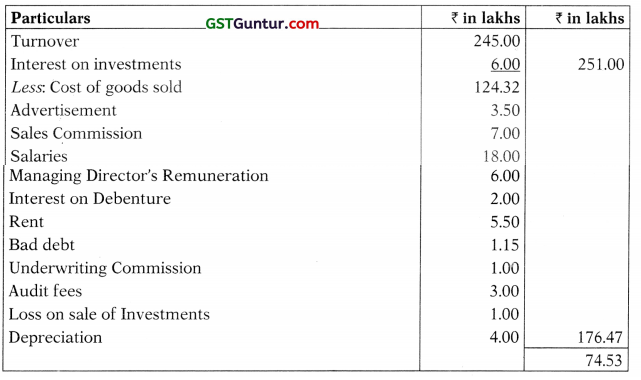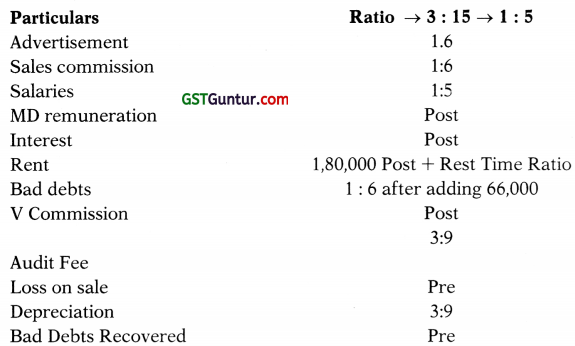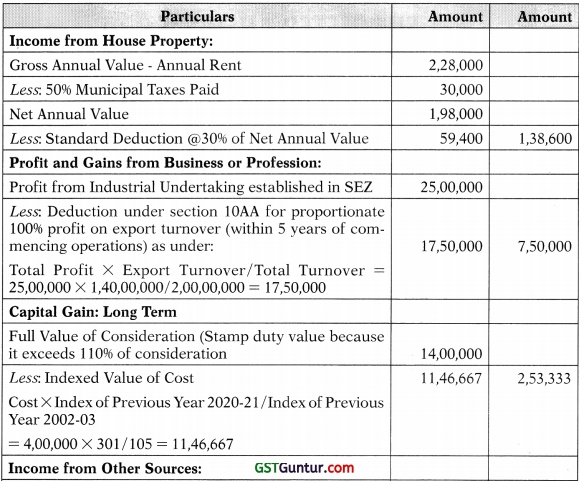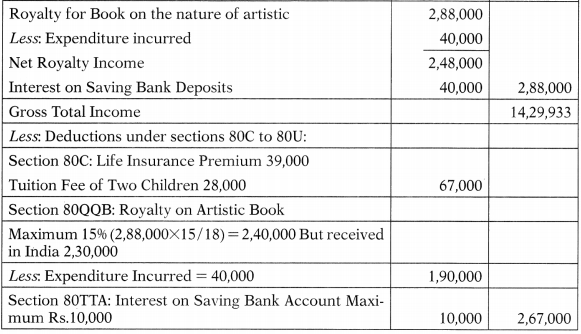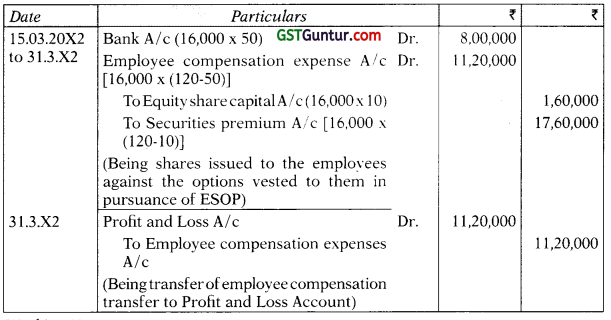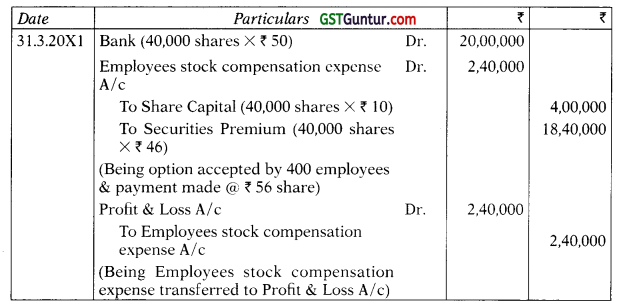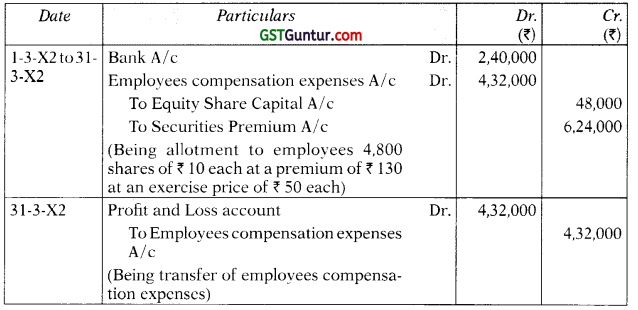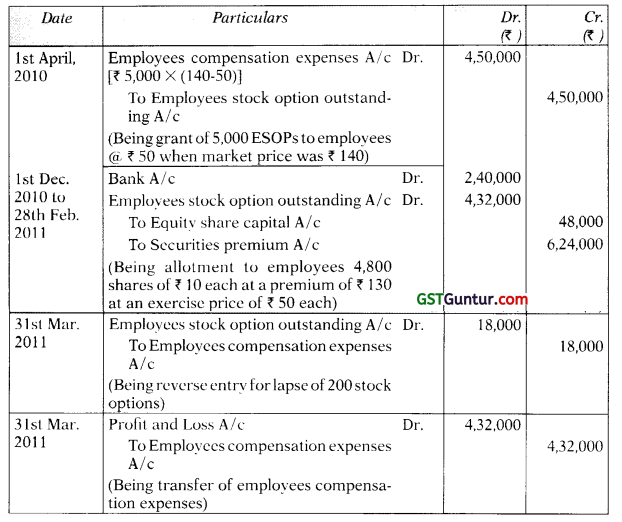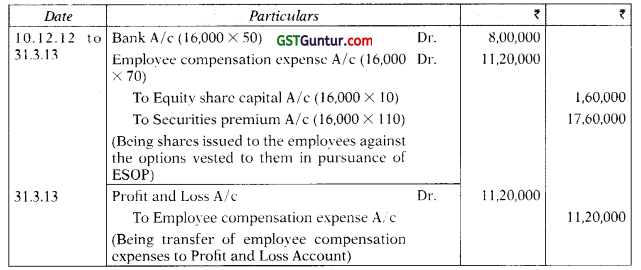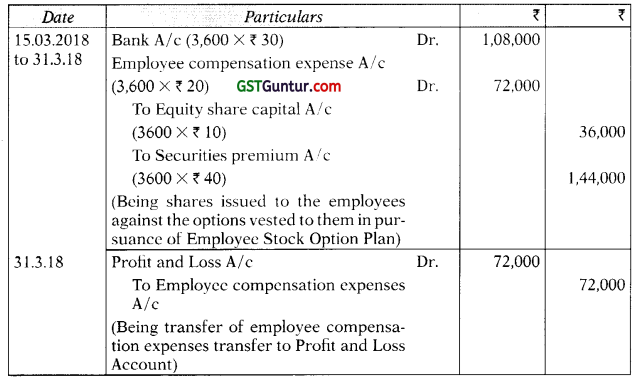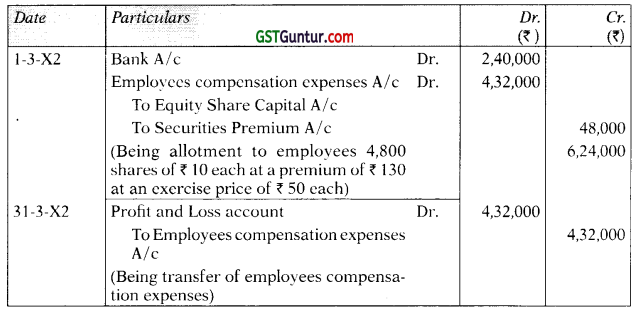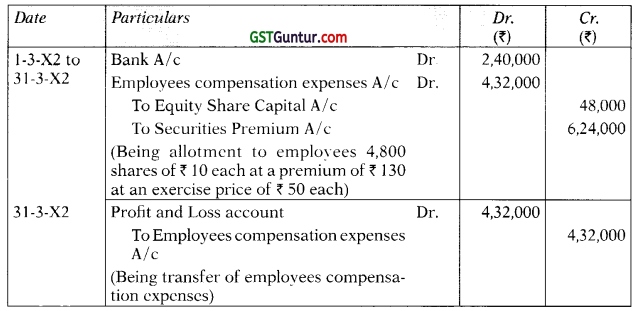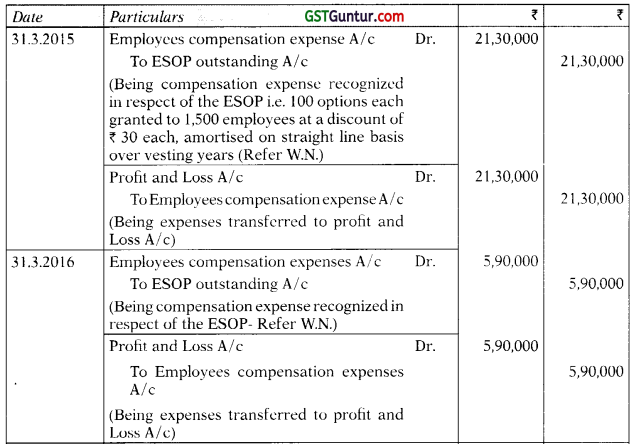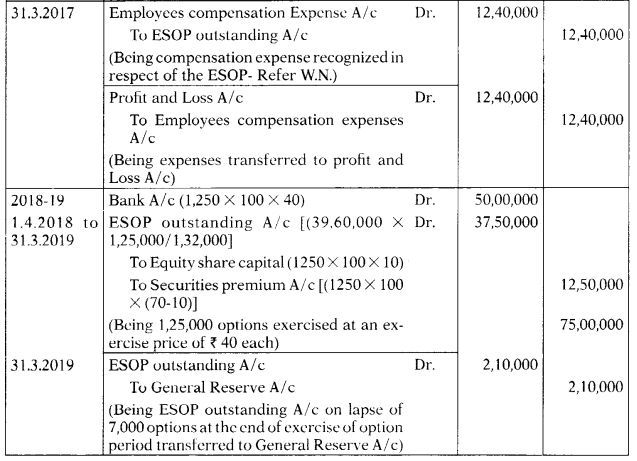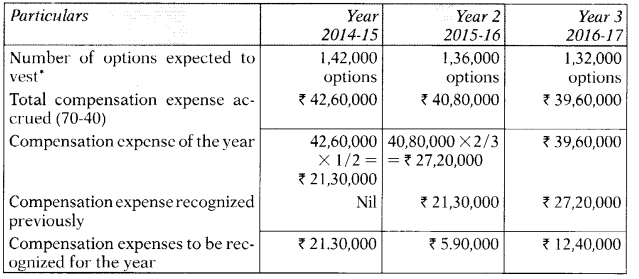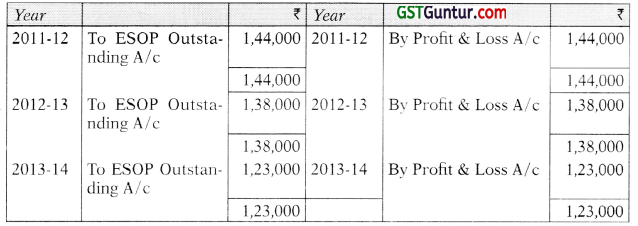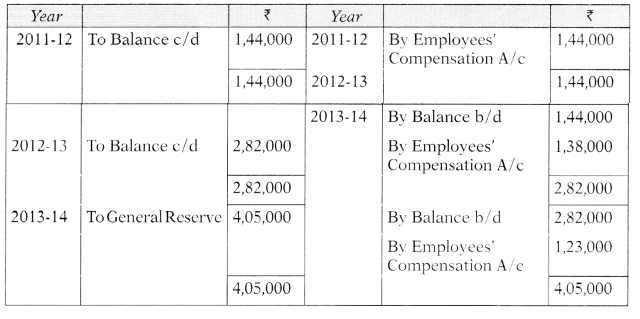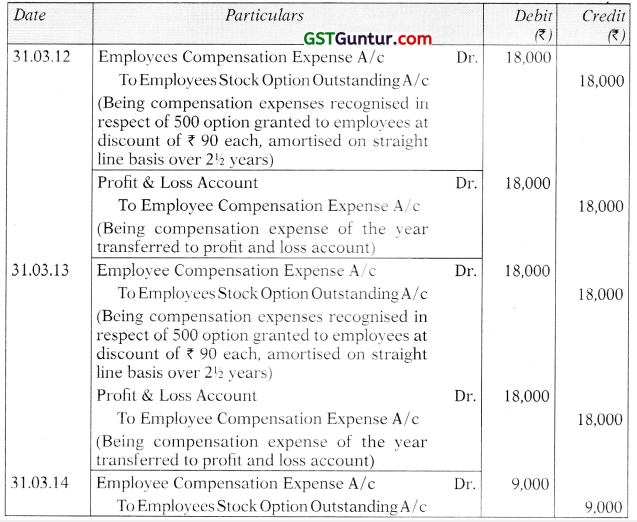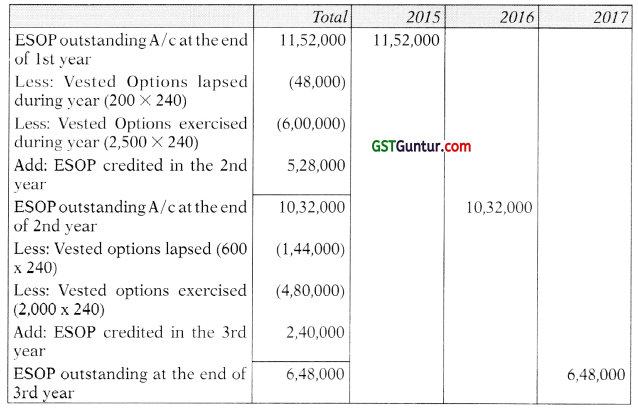Nature, Objective and Scope of Audit – CA Inter Audit Notes is designed strictly as per the latest syllabus and exam pattern.
Nature, Objective and Scope of Audit – CA Inter Auditing Notes
Question 1.
“An auditis independent examination of financial information of any entity, whether profit oriented or not, and irrespective of its size or legal form, when such an examination is conducted with a view to expressing an opinion thereon.”
Explain stating clearly how the person conducting this task should take care to ensure that financial statements would not mislead anybody. [MTP-Oct. 19]
Or
The person conducting audit should take care to ensure thatfinancial statements would notmislead anybody. Explain stating clearly the meaning of Auditing. [RTP-May 20]
Answer:
Meaning of Audit:
“An audit is independent examination of financial information of any entity, whether profit oriented or not, and irrespective of its size or legal form, when such an examination is conducted with a view to expressing an opinion thereon.” From this definition, following main points emerge:
- Audit is Independent examination of Financial information.
- Audit may be carried out of all entities, may be profit oriented or not and irrespective of its size or legal form. For example, listed company engaged in business and Sec. 8 company which is a non-profit organisation, both are required to get the accounts audited under Companies Act, 2013.
- The objective of the audit is to express an opinion on the financial statements.
Points to be ensured that F.S. not misled anybody:
Auditor engaged to perform the task of performing audit need to ensure the following:
(a) Ledger balances agree with the entries made in the book of account.
(b) Sufficient and Appropriate evidences are available for entries made in books of account.
(c) All transactions are being recorded in books of account, i.e. there is no omission.
(d) Information contained in the financial statements is clear and unambiguous.
(e) Amounts shown in financial statements are properly classified, described and disclosures are made in conformity with applicable Accounting Standards.
(f) Financial statements reflect true and fair view of financial results and financial position.

Question 2.
The objective of an audit of financial statements, prepared within a framework of recognised accounting policies and practices and relevant statutory requirements, if any, is to enable an auditor to express an opinion on such financial statements.
Or
State the objectives of Audit according to SA 200 [RTP-May 20J
Answer:
Objectives of Audit:
(a) The objective of an audit of financial statements, prepared within a framework of recognised accounting policies and practices and relevant statutory requirements, if any, is to enable an auditor to express an opinion on such financial statements.
(b) The auditor’s opinion helps determination of the true and fair view of the financial position and operating results of an enterprise.
(c) The user, however, should not assume that the auditor’s opinion is an assurance as to the future viability of the enterprise or the efficiency or effectiveness with which management has conducted the affairs of the enterprise.
(d) Auditor should review and assess the conclusions drawn from the audit evidence obtained and from his knowledge of business of the entity as the basis for the expression of his opinion on the financial information.
Question 3.
List the points that merit consideration in regard to scope of audit.
Answer:
Points to be considered in determining Scope of Audit:
- Audit should cover the examination of all aspects of an entity relevant to financial statements.
- Auditor should assess the sufficiency and appropriateness of the information contained in the accounting records and other source data. For this purpose, auditor should
- evaluate accounting systems and internal controls.
- perform necessary tests, enquiries and other verification procedure of accounting transactions and account balances.
- To determine whether the information is properly disclosed in the financial statements, audit may involve
(a) comparing the financial statements with the underlying records.
(b) considering the judgments used by management in preparing the financial statements.
- Auditor is not expected to perform duties which fall outside the scope of his competence.
- Limitations, if any, on the scope of audit that impair the auditor’s ability to express an unmodified opinion should be set out in his report.
Question 4.
State briefly six important aspects to be considered by an auditor while conducting an audit.
State the matters which the statutory auditor should look into before framing an opinion on accounts on finalisation of audit of accounts. Discuss overall audit approach.
Or
State the principal aspects to be covered in an audit concerning financial statement of account.
[Nov. 15 (5 Marks)]
Or
GST & Co., a firm of Chartered Accountants has been appointed to audit the accounts of XYZ Ltd. The partner wanted to cover principal aspects while conducting its audit of financial statements. Advise those principal aspects.
Or
Discuss: Principal aspects to be considered by an auditor while conductingan audit of final statements of accounts. [May 18 (5 Marks)]
Or
SWM is proprietorship firm engaged in the manufacturing of different kind of yarns. It sells its finished products both in the domestic as well as in the international market. The company is making total turnover of ₹ 3 0 crores. It has also availed cash credit limit of ₹ 3 crores from Dena Bank. In the year 2020-21. Proprietor of the firm is worried about the financial position of the company and is under the impression that since he is out of India, therefore firm might not run well. He approaches an Internal Auditor about as to what would be covered in Audit. Advise regarding principal aspects (any four) to be covered in getting accounts audited. [MTP-March 19]
Answer:
Aspects to be covered in Audit:
1. Examination of Accounting System & Internal Control
- To ascertain whether it is appropriate for the business and helps in proper recording of all the transactions.
- To determine the Nature, Timing and Extent (NTE) of Audit Procedures to be performed.
2. Reviewing the system & procedures
To find out whether they are adequate and comprehensive.
3. Vouching of the transactions
- To ensure authenticity and validity of transactions.
- To check the arithmetical accuracy of the books of account.
- To ascertain proper distinction into capital and revenue items.
4. Verification of Assets & Liabilities
To ensure existence and valuation of the assets and liabilities appearing in the balance sheet.
5. Statutory Compliances
In case of entities governed by some law, rules or regulations, for example in case of audit of a company incorporated under Companies Act, 2013.
6. Expression of Opinion
- On true and fair view of state of Affairs as reflected by Balance Sheet.
- On true and fair view of Financial Results as reflected by Statement of Profit and Loss.
- On true and fair view of Cash Flows as reflected by Cash Flow Statement.
7. Reporting on Other matters
As required by the law governing the entity.

Question 5.
The duties of the auditor are limited to verification of the arithmetical accuracy of the books of the accounts. Comment.
Answer:
Auditor’s Duties:
Statement that duties of the auditor are limited to verification of the arithmetical accuracy of the books of the accounts is not correct, as besides ensuring the arithmetical accuracy of the books of the accounts, auditor is also supposed to cover a number of other aspects in the audit.
Aspects to be covered in the audit in addition to verification of arithmetical accuracy:
1. Examination of Accounting System & Internal Control
- To ascertain whether it is appropriate for the business and helps in proper recording of all the transactions.
- To determine the Nature, Timing and Extent (NTE) of Audit Procedures to be performed.
2. Reviewing the system & procedures
To find out whether they are adequate and comprehensive.
3. Vouching of the transactions
- To ensure authenticity and validity of transactions.
- To check the arithmetical accuracy of the books of account.
- To ascertain proper distinction into capital and revenue items.
4. Verification of Assets & Liabilities
To ensure existence and valuation of the assets and liabilities appearing in the balance sheet.
5. Statutory Compliances
In case of entities governed by some law, rules or regulations, for example in case of audit of a company incorporated under Companies Act, 2013.
6. Expression of Opinion
- On true and fair view of state of Affairs as reflected by Balance Sheet.
- On true and fair view of Financial Results as reflected by Statement of Profit and Loss.
- On true and fair view of Cash Flows as reflected by Cash Flow Statement.
7. Reporting on Other matters
As required by the law governing the entity.
Question 6.
Discuss the types of audits required under law. [Nov. 11 (5 Marks)]
Answer:
Audit required under law:
(a) Companies governed by the Companies Act, 2013;
(b) Banking companies governed by the Banking Regulation Act, 1949;
(c) Electricity supply companies governed by the Electricity Supply Act, 1948;
(d) Co-operative societies registered under the Co-operative Societies Act, 1912;
(e) Public and charitable trusts registered under various Religious and Endowment Acts;
(f) Corporations set up under an Act of Parliament or State Legislature such as the LIC of India.
(g) Specified entities under various sections of the Income-tax Act, 1961.
Question 7.
What is the importance of having the accounts audited by independent professional auditors? [May 01 (8 Marks)]
Or
What are the advantages of Independent audit. [May 12 (8 Marks)]
Or
Discuss the following: Advantages of Independent Auditor. [May 15(5 Marks)]
Or
RAG is proprietorship firm engaged in the manufacturing of textile and handloom products. It sells its finished products both in the domestic as well as in the international market. The company is making total turnover of Rs. 30 crores. It has also availed cash credit limit of Rs. 5 crores from Canara Bank. In the year 2020-21, proprietor of the firm is worried about the financial position of the company and is under the impression that since he is out of India, therefore firm might run into losses. He approaches a CA about advantages of getting his accounts audited throughout the year so that he may not suffer due to accounting weaknesses. Advise regarding advantages of getting accounts audited. [MTP-March 18, Oct. 18]
Or
The chief utility of audit lies in reliable financial statements on the basis of which the state of affairs may be easy to understand. Apart from this obvious utility, there are other advantages of audit. Some or all of these are of considerable value even to those enterprises and organisations where audit is not compulsory. Explain. [RTP-Nov. 18]
Answer:
Advantage of Audit of Financial Statement:
1. Protect the interest of fund providers: It safeguards the financial interests of persons who are not associated with the management of the organisation e.g. partners or shareholders.
2. Moral check on employees: It acts as a moral check on employees from committing defalcations or embezzlement.
3. Settlement of Taxes, etc: Auditing statements of accounts are helpful in settling of taxes, negotiating loans and for determining the purchase consideration for a business.
4. Settlement of Trade Disputes: Audited statements are useful for settling trade disputes for higher wages or bonus.
5. Detection of Wastages: Audited statements also help in detection of wastages and losses and shows the different ways by which these might be checked especially those that occurred due to absence or inadequacy of internal checks or internal control measures.
6. Proper maintenance of books of account: Independent audit ascertains whether the necessary books of account and allied records have been properly kept and helps the client in making good deficiencies or inadequacies in this respect.
7. Appraisal of controls: As an appraisal function, audit reviews the existence and operations of various controls in the organisations and reports weaknesses, inadequacies etc.
8. Admission/retirement of Partner: Audited accounts are of great help in the settlement of accounts at the time of admission or death of the partner.
9. Grant of License: Government may require audited and certified statements before it gives assistance or issues the license for a particular trade.

Question 8.
Discuss Limitations of audit. [May 11 (8 Marks)]
Or
“The process of auditing is such that it suffers from certain limitations”. Discuss.
Or
ABC Ltd. Requested the auditor to provide for absolute assurance in respect of its ten branches scattered in Mumbai and confirm that financial statements are free from material misstatements due to fraud or error. Advise.
Or
The auditor is not expected to, and cannot, reduce audit risk to zero and cannot therefore obtain absolute assurance that the financial statements are free from material misstatement due to fraud or error. This is because there are inherent limitations of an audit. Explain. [RTP-Nov. 18]
Answer:
Inherent Limitations of Audit:
As per SA 200 “Overall Objectives of the Independent Auditor and the Conduct of an Audit in accordance with Standards on Auditing” the auditor is not expected to, and cannot, reduce audit risk to zero and cannot therefore obtain absolute assurance that the financial statements are free from material misstatement due to fraud or error. This is because there are inherent limitations of an audit, which result in most of the audit evidence on which the auditor draws conclusions and bases the auditor’s opinion being persuasive rather than conclusive.
The inherent limitations of an audit arise from:
1. The Nature of Financial Reporting
The preparation of financial statements involves judgment by management in applying the requirements of the entity’s applicable FRF to the facts and circumstances of the entity. Consequently, some financial statement items are subject to an inherent level of variability which cannot be eliminated by the application of additional auditing procedures.
2. Nature of Audit Procedures
There are practical and legal limitations on the auditor’s ability to obtain audit evidence. For example:
- Management & others do not provide complete information intentionally/unintentionally.
- Audit procedures used to gather audit evidence may be ineffective against fraud detection.
- Audit is not an official investigation into alleged wrongdoings.
3. Timeliness of Financial Reporting & the Balance between Benefit & Cost
- User expectation that the auditor will form an opinion on the F. S. within a reasonable period of time and at a reasonable cost.
- It results into use of Test checking and putting most of efforts over the areas having risk of material misstatement with corresponding less efforts in other areas.
4. Other Matters that Affect the Limitations of an Audit
In the case of certain assertions or subject matters, the potential effects of the limitations on the auditor’s ability to detect material misstatements are particularly significant. Such assertions or subject matters include:
(a) Fraud, particularly fraud involving senior management or collusion.
(b) The existence and completeness of related party relationships and transactions.
(c) The occurrence of non-compliance with laws and regulations.
(d) Future events or conditions that may cause an entity to cease to continue as a going concern.
Question 9.
There are practical and legal limitations on the auditor’s ability to obtain audit evidence. Explain with examples. [RTP-May 20, MTP-Oct. 20]
Answer:
Audit limitations as to the nature of audit procedures:
There are practical and legal limitations on the auditor’s ability to obtain audit evidence. For example:
1. There is the possibility that management or others may not provide, intentionally or unintentionally, the complete information that is relevant to the preparation and presentation of the financial statements or that has been requested by the auditor.
2. Fraud may involve sophisticated and carefully organised schemes designed to conceal it. Therefore, audit procedures used to gather audit evidence may be ineffective for detecting an intentional misstatement that involves, for example, collusion to falsify documentation which may cause the auditor to believe that audit evidence is valid when it is not. The auditor is neither trained as nor expected to be an expert in the authentication of documents.
3. An audit is not an official investigation into alleged wrongdoing. Accordingly, the auditor is not given specific legal powers, such as the power of search, which may be necessary for such an investigation.
Question 10.
In case of certain subject matters,limitations on the auditor’s ability to detect material misstatements | are particularly significant. Explain such assertions or subject matters. [RTP-May 20]
Answer:
Other Matters that Affect the Limitations of an Audit
In the case of certain assertions or subject matters, the potential effects of the limitations on the auditor’s ability to detect material misstatements are particularly significant. Such assertions or subject matters include:
(a) Fraud, particularly fraud involving senior management or collusion.
(b) The existence and completeness of related party relationships and transactions.
(c) The occurrence of non-compliance with laws and regulations.
(d) Future events or conditions that may cause an entity to cease to continue as a going concern.
Question 11.
DEF & Co. Chartered Accountants successfully carried out the audit of Shree Garments for the fi¬nancial year 2020-21. After the completion of the audit, there were found material misstatements due to fraud in the financial statements which were not noticed and reported by the auditor. Man¬agement alleges that it is failure on the part of auditor. Comment. [MTP-Oct. 20]
Answer:
Management allegation as to auditor’s failure to detect material misstatements:
As per SA 200 “Overall Objectives of the Independent Auditor and the Conduct of an Audit in accordance with Standards on Auditing’’ the auditor is not expected to, and cannot, reduce audit risk to zero and cannot therefore obtain absolute assurance that the financial statements are free from material misstatement due to fraud or error. This is because there are inherent limitations of an audit, which result in most of the audit evidence on which the auditor draws conclusions and bases the auditor’s opinion being persuasive rather than conclusive.
As per SA – 240, the responsibility for the prevention and detection of fraud and error rests with management through the implementation of an adequate system of internal control. Such a system reduces but does not eliminate the possibility of fraud and error. Auditor’s responsibility for failure to detect fraud and error can arise only due to proven negligence.
The relevant provisions in this regard are:
(a) In forming his opinion, the auditor carries out procedures designed to obtain evidence that will provide reasonable assurance that the financial information is properly stated in all material respects.
(b) Due to the inherent limitations of an audit there is a possibility that material misstatements of the financial information resulting from fraud or error may not be detected. An auditor cannot be charged for non-adherence of basic principles in the following circumstances:
- subsequent discovery of material misstatement of the financial information resulting from fraud or error;
- failure to disclose the affairs of the company kept out of books and concealed from him.
Unless it is proved that procedures undertaken by auditor in the circumstances are inadequate and improper.
Thus, if any misstatement has been detected after the completion of the audit, the same by itself cannot mean that the auditor did not perform his duty properly.
If the auditor can prove with the help of his papers (documentation] that he has followed adequate procedures necessary for the proper conduct of an audit, he cannot be held responsible for the same.

Question 12.
The matter of difficulty, time, or cost involved is not in itself a valid basis for the auditor to omit an audit procedure for which there is no alternative or to be satisfied with audit evidence that is less than persuasive. Explain. [RTP-May 18]
Answer:
Omission of Audit procedure due to difficulty, time or cost constraint:
- The matter of difficulty, time, or cost involved is not in itself a valid basis for the auditor to omit an audit procedure for which there is no alternative or to be satisfied with audit evidence that is less than persuasive.
- Appropriate planning assists in making sufficient time and resources available for the conduct of the audit. Notwithstanding this, the relevance of information, and thereby its value, tends to diminish over time, and there is a balance to be struck between the reliability of information and its cost.
- There is an expectation by users of financial statements that the auditor will form an opinion on the financial statements within a reasonable period of time and at a reasonable cost, recognising that it is impracticable to address all information that may exist or to pursue every matter exhaustively on the assumption that information is in error or fraudulent until proved otherwise.
Question 13.
The relationship between auditing and law is very close one. Discuss. [MTP – Oct. 19]
Answer:
Relationship of Auditing and Law:
- Auditing involves examination of various transactions from the view point of whether or not these have been properly entered into as per the requirements of law, in particular, when an entity is governed by any law, for example companies.
- It necessitates that an auditor should have a good knowledge of business and corporate laws affecting the entity. He should be familiar with the law of contracts, negotiable instruments, etc.
- In analysing the impact of various transactions particularly from the accounting aspect, an auditor ought to have good knowledge about the direct as well as indirect tax laws.
Question 14.
Discuss the following: The discipline of behavioural science is closely linked with the subject of auditing. [Nov. 13 (5 Marks)]
Answer:
Relationship of Auditing with behavioural science:
The discipline of behavioural science is closely linked with the subject of auditing. The knowledge of human behaviour is indeed very essential for an auditor so as to effectively discharge his duties, because of below mentioned aspects:
- While performing audit, auditor is required to interact with a lot of people in the organisation.
- Management auditor is expected to deal with human beings rather than financial figures.
- One of the basic elements in designing the internal control system is personnel.
- Internal control system in an organisation cannot work until and unless the people who are working in the organisation are competent and honest.
Question 15.
“Discipline of Statistics and Mathematics has come closer quite to auditing”. Explain.
Answer:
Relationship of Auditing with Statistics and Mathematics:
- While performing audit, auditor examines the transaction on test checking basis, wherein auditor is required to select the samples.
- Discipline of statistics plays an important role as the auditor is also expected to have the knowledge of statistical sampling so as to arrive at meaningful conclusions.
- The knowledge of mathematics is also required on the part of auditor particularly at the time of verification of inventories.
Question 16.
Both accounting and auditing are closely related with each other. Explain. [RTP-Nov. 20]
Answer:
Relationship between accounting and auditing:
- Accounting and auditing are closely related with each other as auditing reviews the financial statements which are nothing but a result of the overall accounting process.
- Auditing begins when accounting ends.
- It requires that the auditor must have a thorough and sound knowledge of generally accepted principles of accounting before he can review the financial statements.
Question 17.
The objective of the IAASB is to serve the public interest by setting high quality auditing standards and by facilitating the convergence of international and national standards, thereby enhancing the quality and uniformity of practice throughout the world and strengthening public confidence in the global auditing and assurance profession. State how this objective is achieved. [MTP-March 18, March 19]
Or
The IAASB functions as an independent standard-setting body under the auspices of IFAC. Explain stating the objective of IAASB and also how it achieves those objectives. [RTP-May 19]
Answer:
Role of International Auditing & Assurance Standard Board (IAASB)
The IAASB functions as an independent standard-setting body under the auspices of IFAC. The objective of the IAASB is to serve the public interest by setting high quality auditing standards and by facilitating the convergence of international and national standards, thereby enhancing the quality and uniformity of practice throughout the world and strengthening public confidence in the global auditing and assurance profession. The IAASB achieves this objective by:
(a) Establishing high quality auditing standards and guidance for financial statement audits that are generally accepted and recognized by investors, auditors, governments, banking regulators, securities regulators and other key stakeholders across the world;
(b) Establishing high quality standards and guidance for other types of assurance services on both financial and non-financial matters;
(c) Establishing high quality standards and guidance for other related services;
(d) Establishing high quality standards for quality control covering the scope of services addressed by the IAASB; and
(e) Publishing other pronouncements on auditing and assurance matters, thereby advancing public understanding of the roles and responsibility of professional auditors and assurance service providers.

Question 18.
Explain the Auditing Standard setting process of AASB of ICAI.
Answer:
Auditing Standards Setting Process:
The Auditing and Assurance Standards Board (AASB) of the Institute formulates the auditing standards. The steps followed in formulating auditing standards are:
- AASB identifies the areas where auditing standards need to be formulated and the priority in regard to their selection.
- In the preparation of the auditing standards, the Board is normally, assisted by study groups comprising of a cross section of members of the Institute.
- On the basis of the work of the study groups, an Exposure Draft of the proposed auditing standard is prepared by the Board and issued for comments of the members.
- After taking into the comments received, the draft of the proposed auditing standard is finalised by the Board and submitted to the Council of the Institute.
- The Council considers the final draft of the proposed auditing standard and, if necessary, modifies the same in consultation with the Board. The auditing standard is then issued under the authority of the Council.
- While formulating the auditing standards, the Board also takes into consideration the applicable laws, customs, usages and business environment in the country.
Question 19.
What are the objectives and functions of Auditing and Assurance Standard Board (AASB)? Explain. [May 15 (6 Marks)]
Answer:
Objectives and Functions of AASB:
- To review the existing and emerging auditing practices worldwide and identify areas in which Standards on Quality Control, Engagement Standards and Statements on Auditing need to be developed.
- To formulate Engagement Standards, Standards on Quality Control and Statements on Auditing so that these may be issued under the authority of the Council of the Institute.
- To review the existing Standards and Statements on Auditing to assess their relevance in the changed conditions and to undertake their revision, if necessary.
- To develop Guidance Notes on issues arising out of any Standard, auditing issues pertaining to any specific industry or on generic issues, so that those may be issued under the authority of the Council of the Institute.
- To review the existing Guidance Notes to assess their relevance in the changed circumstances and to undertake their revision, if necessary.
- To formulate General Clarifications, where necessary, on issues arising from Standards.
- To formulate and issue Technical Guides, Practice Manuals, Studies and other papers under its own authority for guidance of professional accountants in the cases felt appropriate by the Board.
Question 20.
Discuss the following: Standards collectively known as the Engagement Standards issued by AASB under the authority of Council of ICAI. [May 12 (5 Marks)]
Or
State the Standards issued by AASB which are collectively known as engagement standards. [Nov. 15 (4 Marks)]
Answer:
Engagement Standards issued by AASB:
Preface to Standards on Quality Control, Auditing, Review, Other Assurance and Related Service categorises the Standards based on the nature of service being provided by a member. It, therefore, introduces an umbrella concept of Engagement Standards.
The term “Engagement Standards” comprises the following Standards:
- Standards on Auditing (SAs): These standards are to be applied in the audit of historical financial information.
- Standards on Review Engagements (SREs): These standards are to be applied in the review of historical financial information.
- Standards on Assurance Engagements (SAEs): These standards are to be applied in assurance engagements, engagements dealing with subject matter other than historical financial information.
- Standards on Related Services (SRRs): These standards are to be applied to engagements involving application of agreed upon procedures to information and other related services such as compilation engagements.
Question 21.
Mention any ten title of standards on auditing and the date from which it comes into force.
Answer:
Title of Standards of Auditing and their effective date:
| Number of Standards |
Name of Standard of Auditing |
Effective Date |
| SA 200 (Revised) |
Overall Objectives of the Independent Auditor and the Conduct of an Audit in Accordance with Standards on Auditing |
01.04.2010 |
| SA 210 (Revised) |
Agreeing the Terms of Audit Engagements |
01.04.2010 |
| SA 220 (Revised) |
Quality Control for an Audit of Financial Statements |
01.04.2010 |
| SA 230 (Revised) |
Audit Documentation |
01.04.2009 |
| SA 240 (Revised) |
The Auditor’s Responsibilities Relating to Fraud in an Audit of Financial Statements |
01.04.2009 |
| SA 300 (Revised) |
Planning an Audit of Financial Statements |
01.04.2008 |
| SA 315 |
Identifying and Assessing the Risk of material Misstatements through understating the Entity and its Environment |
01.04.2008 |
| SA 500 (Revised) |
Audit Evidence |
01.04.2009 |
| SA 501 (Revised) |
Audit Evidence – Specific Considerations for Selected Items |
01.04.2010 |
| SA 505 (Revised) |
External Confirmations |
01.04.2010 |
| SA 510 (Revised) |
Initial Audit Engagements – Opening balances |
01.04.2010 |
| SA 520 (Revised) |
Analytical Procedures |
01.04.2010 |
| SA 610 (Revised) |
Using the work of Internal Auditors |
01.04.2016 |
| SA 620 (Revised) |
Using the Work of an Auditor’s Expert |
01.04.2010 |

Question 22.
Discuss the following: “Statements” and “Guidance Notes” of ICAI Whether mandatory or recommandatory. [May 14 (5 Marks)]
Answer:
Statement and Guidance Notes – Level of authority and degree of compliance:
| Statements |
Guidance Notes |
| Purpose |
Statements are issued with a view to securing compliance by members on matters which in the opinion of the council of the institute are critical for the proper discharge of their functions. |
Guidance Notes are designed to provide guidance to members on matters which may arise in the course of their professional work and on which they may desire assistance. |
| Compliance |
Compliance is Mandatory in Nature. |
Compliance is recommendatory in nature, except a few guidance notes in case of which the Council has specifically stated that they should be considered as mandatory on members while discharging their attest function. |
| Examples |
Preface on Standards on Quality Control. Auditing, Review, Other Assurance and related Services. |
Guidance Note on Audit of Inventories. Guidance Note on Audit of Investments. |
| Level of Authority/ Duties of Members |
Examine whether ‘Statements’ relating to accounting matters are complied with in the presentation of F.S. In the event of any deviation from such ‘Statements’, to make adequate disclosures in their audit reports so that the users of F.S. may be aware of such deviations. Ensure that the ‘Statements’ relating to auditing matters, are followed in the audit of financial information covered by their audit reports. If, for any reason, a member, has not been able to perform an audit in accordance with such ‘Statements’ his report should draw attention to the material departures there from. |
Examine whether the recommendations in a guidance note relating to an accounting matter have been followed or not. If the same have not been followed, consider whether keeping in view the circumstances of the case, a disclosure in his report is necessary. Follow recommendations in a guidance note relating to auditing except where he is satisfied that in the circumstances ofthe case, it may not be necessary to do so. |
Question 23.
State briefly the Qualities of Auditors. [Nov. 04 (4 Marks)]
Or
Lord Justice Lindley in the course of the judgment in the famous London & General Bank case had succinctly summed up the overall view of what an auditor should be as regards the personal qualities. Explain stating also the qualities of Auditor. [RTP-May 19]
Answer:
Qualities of Auditor
Lord Justice Lindley in the course of the judgment in the famous London & General Bank case had succinctly summed up the overall view of what an auditor should be as regards the personal qualities. He said, “an auditor must be honest that is, he must not certify what he does not believe to be true and must take reasonable care and skill before he believes that what he certifies is true”.
(A) Technical Qualities: Auditor must have sound knowledge of followings:
- Accountancy – its principles, procedures, techniques and standards (AS).
- Auditing – its principles, procedures, techniques and standards (SA).
- Direct and Indirect Taxation Laws.
- General Principles of Law of contracts and partnership.
- Corporate Laws.
- Client Nature of Business.
(B) Personal Qualities: Apart from the technical qualities, the auditor should also possess certain personal qualities mentioned below:
- Objectivity, Integrity and Independence.
- Confidentiality of client information.
- Effective Communication skills.
- Tactful approach in dealing with clients.
- Clear-headedness and commonsense.
- Reliability and trust.
Question 24.
The firm’s system of quality control should include policies and procedures addressing each element. Explain. [RTF-Nov. 18, MTP – Oct. 19]
Answer:
Elements of a System of Quality Control:
As per SQC 1 “Quality Control for Firms that perform Audits and Reviews of Historical Financial Information/and Other Assurance and Related Services Engagements”, the firm’s system of quality control should include policies and procedures addressing each of the following elements:
(a) Leadership responsibilities for quality within the firm.
(b) Ethical requirements.
(c) Acceptance and continuance of client relationships and specific engagements.
(d) Human resources.
(e) Engagement performance.
(f) Monitoring.
(g) The quality control policies and procedures should be documented and communicated to the firm’s personnel.
Question 25.
As per SA 22 0, the engagement partner shall take responsibility for the overall quality on each audit engagement to which that partner is assigned. While taking responsibility for the overall quality on each audit engagement, analyse and explain the emphasis of the actions of the engagement partner and appropriate messages to the other members of the engagement team. Also define engagement partner. [MTP-Aug. 18]
Or
The engagement partner shall take the responsibility for the overall quality on each audit engage¬ment to which that partner is assigned. Discuss with reference to SA 220 “Quality Control for an audit of financial statement”. [Nov. 19 (3 Marks)]
Or
As per SA 220 “Quality Control for an Audit of Financial Statements”, the engagement partner shall take responsibility for the overall quality on each audit engagement to which that partner is .assigned. Explain clearly stating the meaning of engagement partner and also the actions of the engagement partner and appropriate messages to the other members of the engagement team, in taking responsibility for the overall quality on each audit engagement. [RTP-Nov. 20]
Answer:
Leadership Responsibilities for Quality on Audits:
As per SA 220 “Quality Control for an Audit of Financial Statements” the engagement partner shall take responsibility for the overall quality on each audit engagement to which that partner is assigned.
As a part of this responsibility Engagement Partner should emphasizes the following to the Engagement Team (ET):
- Compliance with professional Standards and legal requirements.
- Compliance with firm’s Quality Control Policies and procedures as applicable.
- Issuance of appropriate audit report.
- Ability to raise concerns without fear.
- Quality is essential & indispensable in engagement performance.
Meaning of Engagement Partner:
The partner or other person in the firm who is a member of the Institute of Chartered Accountants of India and is in full time practice and is responsible for the engagement and its performance, and for the report that is issued on behalf of the firm, and who, where required, has the appropriate authority from a professional, legal or regulatory body.

Question 26.
Comment as an auditor on the following situations: Mr. X, a partner in X & Co., a firm of a Chartered Accountants, died on 31-3-2020 after completing routine audit work of XYZ Company Ltd. Mr. Y another partner of the firm of Chartered Accountants signed the financial statements of XYZ Com¬pany Ltd., without reviewing the finalization work done by the assistants. [Nov. 10 (5 Marks)]
Answer:
Review of Work performed by others:
As per SA 220, “Quality Control for an Audit of Financial Statements”, The engagement partner shall take responsibility for reviews being performed in accordance with the firm’s review policies and procedures.
Review procedures consists of the considerations, whether,
- the work has been performed in accordance with professional standards and regulatory and legal requirements;
- significant matters have been raised for further consideration;
- appropriate consultations have taken place and the resulting conclusions have been documented and implemented;
- the work performed supports the conclusions reached and is appropriately documented;
- the evidence obtained is sufficient and appropriate to support the auditor’s report; and
- the objectives of the engagement procedures have been achieved.
When the auditor delegates work to assistants or uses work performed by other auditors/ experts he will continue to be responsible for forming and expressing his opinion on the financial statements. However, he will be entitled to rely on the work performed by others, provided he exercises adequate skill and care and is not aware of any reason to believe that he should not have so relied.
The auditor should carefully direct, supervise and review work delegated to assistants. He should obtain reasonable assurance that work performed by other auditors/experts and assistants is adequate for his purpose.
In the instant case, Mr. X, a partner of the firm had completed routine audit work and died on 31 March, 2018. Mr. Y another partner of the firm has signed the financial statement of XYZ Company Ltd., without reviewing the finalization work done by the assistants. Mr. Y will be fully responsible for negligence, he cannot take the shelter that Mr. X had done the work.
Conclusion: Mr. Y has negligently performed his duties.
Question 27.
Mention any four information which assists the auditor in accepting and continuing of relationship with the client as per SA 220. [May 15 (5 Marks)]
Or
As per SA 220, “Quality Control for an Audit of Financial Statements” the auditor should obtain information considered necessary in the circumstances before accepting an engagement with a new client, when deciding whether to continue an existing engagement and when considering acceptance of a new engagement with an existing client. Explain [RTP-May 18]
Or
CA Raj, an engagement partner wants to take decision, regarding acceptance and continuance of an audit engagement. Which information, he should obtain before accepting an engagement? [May 19 (3 Marks)]
Answer:
Information assisting auditor in accepting and continuing of relationship with the client:
As per SA 220 “Quality Control for an Audit of F.S.” the information which assists the auditor in accepting and continuing of relationship with the client may include the following:
- The Integrity of the principal owners, key management and TCWG of the entity;
- Competency of engagement team to perform the audit engagement and availability of necessary capabilities, including time and resources;
- Compliance with relevant ethical requirements by firm and the engagement team; and
- Significant matters that have arisen during the current or previous audit engagement, and their implications for continuing the relationship.
Question 28.
The firm should establish policies and procedures designed to provide it with reasonable assurance that the policies and procedures relating to the system of quality control are relevant, adequate, operating effectively and complied with in practice. Such policies and procedures should include an ongoing consideration and evaluation of the firm’s system of quality control, including a periodic inspection of a selection of completed engagements. Explain in the above context the purpose of monitoring compliance with quality control policies and procedures. [RTP-Nov. 19, Nov. 20]
Answer:
Purpose of monitoring compliance with quality control policies and procedures
- As per SQC 1 “Quality Control for Firms that perform Audits and Reviews of Historical Financial Information, and Other Assurance and Related Services Engagements”, the firm should establish policies and procedures designed to provide it with reasonable assurance that the policies and procedures relating to the system of quality control are relevant, adequate, operating effectively and complied with in practice.
- Such policies and procedures should include an ongoing consideration and evaluation of the firm’s system of quality control, including a periodic inspection of a selection of completed engagements.
The purpose of monitoring compliance with quality control policies and procedures is to provide an evaluation of:
(a) Adherence to professional standards and regulatory and legal requirements;
(b) Whether the quality control system has been appropriately designed and effectively implemented; and
(c) Whether the firm’s quality control policies and procedures have been appropriately applied, so that reports that are issued by the firm or engagement partners are appropriate in the circumstances.
Question 29.
“Independence of auditors must not only exist in fact, but should also appear to exist to all reason¬able persons”. Discuss highlighting the advantages of an independent audit.
Answer:
Concept of Independent Audit:
As per Guidance Note of the ICAI on “Independence of Auditors” independence implies that the judgment of a person is not subordinate to the wishes or directions of another person who might have engaged him. “Independence of auditors must not only exist in fact, but should also appear to exist to all reasonable persons”. The auditor has to conduct himself in such a way that no reasonable person, can doubt his objectivity and integrity. In fact, the word independent as a prefix in audit proposition in itself enshrines the concept of independence of an auditor and it is thus, considered fundamental concept in the theory of auditing. The relationship between the auditor and the client should be such that firstly, he himself is satisfied about his client and then it is understood by others that the independence of the auditor is not affected.
Advantages of Independent Audit:
- Protect the interest of fund providers: It safeguards the financial interests of persons who are not associated with the management of the organisation e.g. partners or shareholders.
- Moral check on employees: It acts as a moral check on employees from committing defalcations or embezzlement.
- Settlement of Taxes, etc: Auditing statements of accounts are helpful in settling of taxes, negotiating loans and for determining the purchase consideration for a business.
- Settlement of Trade Disputes: Audited statements are useful for settling trade disputes for higher wages or bonus.
- Detection of Wastages: Audited statements also help in detection of wastages and losses and shows the different ways by which these might be checked especially those that occurred due to absence or inadequacy of internal checks or internal control measures.
- Proper maintenance of books of account: Independent audit ascertains whether the necessary books of account and allied records have been properly kept and helps the client in making good deficiencies or inadequacies in this respect.
- Appraisal of controls: As an appraisal function, audit reviews the existence and operations of various controls in the organisations and reports weaknesses, inadequacies etc.
- Admission/retirement of Partner: Audited accounts are of great help in the settlement of accounts at the time of admission or death of the partner.
- Grant of License: Government may require audited and certified statements before it gives assistance or issues the license for a particular trade.
Question 30.
Write short note on: Auditor’s Independence. [May 07 (4 Marks)]
Answer:
As per Guidance Note of the ICAI on “Independence of Auditors” independence implies that the judgment of a person is not subordinate to the wishes or directions of another person who might have engaged him. “Independence of auditors must not only exist in fact, but should also appear to exist to all reasonable persons”. The auditor has to conduct himself in such a way that no reasonable person, can doubt his objectivity and integrity. In fact, the word independent as a prefix in audit proposition in itself enshrines the concept of independence of an auditor and it is thus, considered fundamental concept in the theory of auditing. The relationship between the auditor and the client should be such that firstly, he himself is satisfied about his client and then it is understood by others that the independence of the auditor is not affected.

Question 31.
The Code of Ethics for Professional Accountants, prepared by the International Federation of Accountants (IFAC) identifies five types of threats. Explain.
Or
The auditor should be straightforward, honest and sincere in his approach to his professional work. He must be fair and must not allow prejudice or bias to override his objectivity. He should maintain an impartial attitude and both be and appear to be free of any interest which might be regarded as being incompatible with integrity and objectivity. Many different circumstances, or combination of circumstances, may be relevant and accordingly it is impossible to define every situation that creates threats to independence and specify the appropriate mitigating action that should be taken.
In addition, the nature of assurance engagements may differ and consequently different threats may exist requiring the application of different safeguards.
Explain stating clearly the five types of threats as contained in Code of Ethics for Professional Accountants, prepared by the International Federation of Accountants (IFAC). [MTP-Oct. 18]
Answer:
Threats to Independence:
1. Self-interest threats
It may occur as a result of the financial or other interests of a professional accountant or of a relative. Examples are:
- direct or indirect financial interest in a client,
- loan or guarantee to or from the concerned client,
- undue dependence on a client’s fees,
- close business relationship with an audit client,
- potential employment with the client, and
- contingent fees for the audit engagement.
2. Self-review threats
It may occur when a previous judgment needs to be re-evaluated by the professional accountant responsible for that judgment. Instances, where such threats may arise, are:
(a) when an auditor having recently been a director or senior officer of the company, and
(b) when auditors perform services that are themselves subject matters of audit.
3. Advocacy threats
It may occur when a professional accountant promotes a position or opinion to the point that subsequent objectivity may be compromised.
For example, an auditor dealing with shares or securities of the audited company, or becomes the client’s advocate in litigation and third-party disputes.
4. Familiarity threats
It may occur when, because of a relationship, a professional accountant becomes too sympathetic to the interests of others. This can occur in many ways:
- close relative of the audit team working in a senior position in the client company,
- former partner of the audit firm being a director or senior employee of the client,
- long association between specific auditors and their specific client counterparts, and
- acceptance of significant gifts or hospitality from the client company, its directors or employees.
5. Intimidation threats
It may occur when a professional accountant may be deterred from acting objectively by threats, actual or perceived.
Question 32.
Write a note on “Self-review threats”. [RTP-Nov. 19]
Answer:
Self Review Threats:
It may occur when a previous judgment needs to be re-evaluated by the professional accountant responsible for that judgment. Instances where such threats may arise are:
(a) when an auditor having recently been a director or senior officer of the company, and
(b) when auditors perform services that are themselves subject matters of audit.
Question 33.
Familiarity threats are self-evident, and occur when auditors form relationships with the client where they end up being too sympathetic to the client’s interests. Explain. [MTP-April 19]
Answer:
Familiarity threats
It may occur when, because of a relationship, a professional accountant becomes too sympathetic to the interests of others. This can occur in many ways:
- close relative of the audit team working in a senior position in the client company,
- former partner of the audit firm being a director or senior employee of the client,
- long association between specific auditors and their specific client counterparts, and
- acceptance of significant gifts or hospitality from the client company, its directors or employees.
Question 34.
The Chartered Accountant has a responsibility to remain independent by taking into account the context in which they practice, the threats to independence and the safeguards available to elimi¬nate the threats. State the guiding principles in this regard. [RTP-Nov. 19, MTP-May20]
Or
Describe the guiding principles which the auditor should take into account which serves as the safeguards to eliminate the threats to independence. [Nov. 20 (4 Marks)]
Answer:
Safeguards to Independence
(a) Auditors should always be and appears to be independent of the entities that they are auditing.
(b) Auditor should abide himself with the key fundamental principles are integrity, objectivity and professional scepticism.
(c) Auditor should consider threats to independence before accepting any audit assignment.
(d) In case of existence of any threats to independence, auditor should not accept the engagement or put in place safeguards that eliminate them.
(e) If necessary safeguards cannot be put in place due to circumstances, auditor should withdraw.

Question 35.
Explain the Overall Objectives of Independent auditor. [RTP-May 19]
Answer:
Overall Objectives Independent Auditor:
SA 200 “Overall Objectives of the Independent Auditor and Conduct of Audit in accordance with SAs” states that in conducting an audit of financial statements, the overall objectives of the auditor are:
(a) To obtain reasonable assurance about whether the F. S. as a whole are free from material misstatement, whether due to fraud or error, thereby enabling the auditor to express an opinion on whether the F.S. are prepared, in all material respects, in accordance with an applicable FRF, and
(b) To report on the F.S. and communicate as required by the SAs, in accordance with the auditor’s findings.
(c) In all cases when reasonable assurance cannot be obtained and a qualified opinion in the auditor’s report is insufficient, the SAs require that the auditor disclaim an opinion or withdraw from the engagement.
Question 36.
Comment on the following: “The Auditor shall comply with relevant ethical requirements including independence”. [MTP-April 19]
Or
Discuss prerequisites and fundamental principles to be possessed by an auditor. [May 11 (8 Marks)]
Or
Relevant ethical requirements ordinarily comprise the Code of Ethics for Professional Accountants related to an audit of financial statements. Discuss with reference to those fundamental principles of professional ethics. [RTP-May 19]
Or
The auditor shall comply with relevant ethical requirements, including those pertaining to independence, relating to financial statement audit engagements. Relevant ethical requirements ordinarily comprise the Code of Ethics for Professional Accountants (1ESBA Code) related to an audit of financial statements. The Code establishes the fundamental principles of professional ethics relevant to the auditor when conducting an audit of financial statements. Explain.
[MTP-May 20]
Answer:
Compliance of Ethical requirements:
(a) As per SA 200 “Overall Objectives ofthe Independent Auditor and Conduct of Auditin accordance with SAs” the auditor shall comply with relevant ethical requirements, including independence.
(b) Relevant ethical requirements ordinarily comprise the Code of Ethics issued by the ICAI. The fundamental principles are:
- Integrity;
- Objectivity;
- Professional competence and due care;
- Confidentiality; and
- Professional behaviour.
(c) Independence comprises both independence of mind and independence of appearance.
(d Independence enhances the auditor’s ability to act with integrity to be objective and to maintain an attitude of professional skepticism.
Question 37.
SA 200 requires that the auditor shall and perform an audit with professional skepticism. Explain the statement.
Or
Discuss with reference to SAs: The auditor is responsible for maintainingan attitude of professional skepticism throughout the audit. Do you agree with the statement. [May 14 (6 Marks)]
Or
The auditor shall plan and perform an audit with professional skepticism recognizing that circum¬stances may exist that cause the financial statement to be materially misstated. Discuss any four examples of professional skepticism. [Nov. 19 (4 Marks)]
Or
Professional skepticism refers to an attitude that includes a questioning mind, being alert to con¬ditions which may indicate possible misstatement due to error or fraud, and a critical assessment of audit evidence. The auditor shall plan and perform an audit with professional skepticism recog¬nising that circumstances may exist that cause the financial statements to be materially misstated. Explain giving examples. [RTP-Nov. 20]
Answer:
Professional Skepticism:
(a) SA200 “Overall Objectives ofthe Independent Auditor and Conduct of Audit in accordance with SAs” requires that the auditor shall plan and perform an audit with professional skepticism.
(b) Meaning of Professional Skepticism: An attitude that includes a questioning mind, being alert to conditions which may indicate possible misstatement due to error or fraud, and a critical assessment of audit evidence.
(c) Professional Skepticism Reduces risk of:
- Overlooking unusual circumstances,
- Over generalising when drawing conclusions from audit observations.
- Using inappropriate assumptions in determining N, T, E of audit procedures & evaluating the results thereof.
(d) Professional skepticism includes being alter to:
- Contradictory audit evidence.
- Questions on reliability of documents.
- Conditions indicating possible frauds.
- Circumstances suggesting need for audit procedures in addition to those suggested in SAs.

Question 38.
Comment on the following: “The auditor shall exercise professional judgment in planning and performing an audit of financial statements.
Or
“Professional judgment is essential to the proper conduct of an audit.” Discuss. [Nov. 18 (5 Marks)]
Answer:
Professional Judgment:
(a) SA 200 “Overall Objectives of the Independent Auditor and Conduct of Audit in accordance with SAs” requires that the auditor shall exercise professional judgment in planning and performing an audit of financial statements.
(b) Meaning of Professional Judgment: The application of relevant training, knowledge and experience, within the context provided by auditing, accounting and ethical standards, in making informed decisions about the courses of action that are appropriate in the circumstances of the audit engagement.
(c) Exercise of professional judgment depends on facts & circumstances known to the auditor.
(d) Professional Judgment is to be exercised throughout the audit and to be appropriately documented.
(e) Professional Judgment is important when deciding about:
- Materiality & audit risk.
- NTE of audit procedures.
- Evaluating sufficiency & appropriateness of audit procedures.
- Evaluating management judgment in applying applicable FRF.
- Drawing conclusions based on audit evidence.
Question 39.
“Independence of mind and independence in appearance are interlinked perspectives of Indepen¬dence of auditors.” Explain. [May 19 (3 Marks)]
Or
There are two interlinked perspectives of independence of auditors, one, independence of mind; and two, independence in appearance. Explain. [MTP-Oct. 20]
Answer:
Independence of Auditors:
- As per SA 200 “Overall Objectives of the Independent Auditor and Conduct of Audit in accordance with SAs” the auditor shall comply with relevant ethical requirements, including independence.
- Independence comprises both independence of mind and independence of appearance.
- In the case of an audit engagement it is in the public interest and, therefore, required by the Code of Ethics, that the auditor be independent of the entity subject to the audit. The Code describes independence as comprising both independence of mind and independence in appearance.
- The auditor’s independence from the entity safeguards the auditor’s ability to form an audit opinion without being affected by influences that might compromise that opinion.
- Independence of mind implies the state of mind that permits the provision of an opinion without being affected by influences allowing an individual to act with integrity, and exercise objectivity and professional skepticism.
- Independence in appearance implies the avoidance of facts and circumstances that are so significant that a third party would reasonably conclude an auditor’s integrity, objectivity or professional skepticism had been compromised.
- Independence enhances the auditor’s ability to act with integrity, to be objective and to maintain an attitude of professional skepticism.
Question 40.
What is an audit engagement letter? What are the principal contents of audit engagement letter.
Or
What is the purpose of a Letter of Engagement? What are the important contents of a Letter of Engagement? [May 17 (6 Marks)]
Answer:
Purposes of letter of engagement:
SA 210 “Agreeing the terms of Audit Engagement” deals with the auditor’s responsibilities in agreeing the terms of the audit engagement with management and TCWG.
The agreed terms of the audit engagement shall be recorded in an audit engagement letter or other suitable form of written agreement and shall include:
- The objective and scope of the audit of the F.S.;
- The responsibilities of the auditor;
- The responsibilities of management;
- Identification of the applicable FRF for the preparation of the F.S.; and
- Reference to the expected form and content of any reports to be issued by the auditor and a statement that there may be circumstances in which a report may differ from its expected form and content.
So the main purpose of letter of engagement is to ensure a common understanding of the terms of audit engagement between the auditor and management and TCWG.
Question 41.
Write short note on: Preconditions of an audit.
Answer:
Preconditions for an Audit:
As per SA 210 “Agreeing the terms of Audit Engagement” before accepting an audit engagement auditor is required to ensure existence of preconditions.
Accordingly, Pre-conditions to be examined are:
(a) Determine whether the financial reporting framework to be applied in the preparation of the financial statements is acceptable; and
(b) Obtain the agreement of management that it acknowledges and understands its responsibilities for followings:
- the preparation of the F.S. in accordance with the applicable FRF.
- exercising necessary internal control to enable the preparation of F.S. that are free from material misstatement, whether due to fraud or error.
- to provide the auditor with:
(a) Access to all relevant information such as records, documentation and other matters;
(b) Additional information that the auditor may request from management for the purpose of the audit; and
(c) Unrestricted access to persons within the entity from whom the auditor determines it necessary to obtain audit evidence.
Question 42.
Comment on the following: “It is not mandatory to send a new engagement letter in recurring audit, but sometimes it becomes mandatory to send new letter.” Explain those situations where new engagement letter is to be sent. [Nov. 11 [5 Marks}]
Or
indicate the factors which make it appropriate for an auditor to send a new engagement letter for a recurring audit. [Nov. 14 (5 Marks}!
Or
‘P’ an auditor decides not to send a new engagement letter to G Ltd. every year. Whether he is right in his approach. State the circumstances where sendingnew engagement letter, would be appropriate [NOV. 15 (5 Marks}]
Answer:
Engagement Letter in case of Recurring Audit:
SA 210 “Agreeing the Terms of Audit Engagement” provides that in case of recurring audits, the auditor shall assess whether circumstances require revision in terms of the audit engagement and whether there is a need to remind the entity of the existing terms of the audit engagement.
The auditor may decide not to send a new audit engagement letter or other written agreement each period. However, the following factors may make it appropriate to revise the terms of the audit engagement or to remind the entity of existing terms:
- Any indication that the entity misunderstands the objective and scope of the audit.
- Any revised or special terms of the audit engagement.
- A recent change of senior management.
- A significant change in ownership.
- A significant change in nature or size of the entity’s business.
- A change in legal or regulatory requirements.
- A change in the financial reporting framework adopted in the preparation of the F.S.
- A change in other reporting requirements.

Question 43.
X, a Chartered Accountant was engaged by PQR & Co. Ltd. for auditing their accounts. He seht his letter of engagement to the Board of Directors, which was accepted by the Company. In the course of audit of the company, the auditor was unable to obtain appropriate sufficient audit evidence regarding receivables. The client requested for a change in the terms of engagement. Offer your comments in this regard. [Nov. 09 (5 Marks)]
Or
“An auditor who before the completion of the engagement is requested to change the engagement to one which provides a lower level of assurance should consider the appropriateness of doing so.” Discuss.
Answer:
Acceptance of Changes in terms of engagement:
SA 210 “Agreeingthe terms of Audit Engagement” deals with the auditor’s responsibilities in agreeing
the terms of the audit engagement with management and TCWG.
(a) The auditor shall not agree to a change in the terms of the audit engagement where there is no reasonable justification for doing so.
(b) If prior to completing the audit engagement, the auditor is requested to change the audit engagement to an engagement that conveys a lower level of assurance, the auditor shall determine whether there is reasonable justification for doing so.
(c) If the terms of the audit engagement are changed, the auditor and management shall agree on and record the new terms of the engagement in an engagement letter or other suitable form of written agreement.
(d) If the auditor is unable to agree to a change of the terms of the audit engagement and is not permitted by management to continue the original audit engagement, the auditor shall:
- Withdraw from the audit engagement where possible under applicable law or regulation; and
- Determine whether there is any obligation, either contractual or otherwise, to report the circumstances to other parties, such as TCWG, owners or regulators.
Question 44.
An auditor who, before the completion of the engagement, is requested to change the engagement to one which provides a lower level of assurance, should consider the appropriateness of doing so. Explain stating the factors based on which client can request the auditor to change the engagement. [RTP-Nov. 19]
Answer:
Factors based on which client can request the auditor to change the engagement:
SA 210 “Agreeing the terms of Audit Engagement” deals with the auditor’s responsibilities in agreeing the terms of the audit engagement with management and TCWG. Accordingly.
- A request from the entity for the auditor to change the terms of the audit engagement may result from
(a) a change in circumstances affecting the need for the service,
(b) a misunderstanding as to the nature of an audit as originally requested or
(c) a restriction on the scope of the audit engagement, whether imposed by management or caused by other circumstances.
- The auditor, considers the justification given for the request, particularly the implications of a restriction on the scope of the audit engagement.
- If the auditor concludes that there is reasonable justification to change the audit engagement to a review or a related service, the audit work performed to the date of change may be relevant to the changed engagement; however, the work required to be performed and the report to be issued would be those appropriate to the revised engagement.
Objective Type Questions (True/False, Correct/Incorrect)
Question 1.
Auditing implies systematic, critical and special examination of the records of a business for a specific purpose.
Answer:
Statement is False.
- Auditing involves examination of financial information contained in financial statements to express an opinion on their true and fair view.
- Systematic, Critical and Special examination of the records of a business for a specific purpose is termed as investigation.
Question 2.
The purpose of an audit is to enhance the degree of confidence of intended users in the financial statements.
Answer:
Statement is correct.
- As per SA 200 “Overall Objectives of the Independent Auditor and the Conduct of an Audit in Accordance with Standards on Auditing”, the purpose of an audit is to enhance the degree of confidence of intended users in the financial statements.
- This is achieved by the expression of an opinion by the auditor on whether the financial statements are prepared, in all material respects, in accordance with an applicable financial reporting framework.
Question 3.
Auditing is legally obligatory for all types of business organisations.
Answer:
Statement is False.
- Auditing is not legally obligatory for all types of business organisations.
- Examples of such organisations are Proprietorship entities, Partnership Firms, HUF.

Question 4.
Auditor’s Opinion is an assurance as to the future viability of the enterprise or the efficiency or effectiveness with which management has conducted the affairs of the enterprise.
Answer:
Statement is False.
- SA 200 “Overall Objectives of an Independent Auditor and Conduct of an Audit in accordance with Standards on Auditing” specifically provides that the auditors opinion cannot be assumed as an assurance as to the future viability of the enterprise or the efficiency or effectiveness with which management has conducted the affairs of the enterprise.
- The objective of an audit of financial statements, prepared within a framework of recognised accounting policies and practices and relevant statutory requirements, if any, is to enable an auditor to express an opinion on such financial statements.
Question 5.
To maintain an adequate accounting system incorporating various controls is the responsibility of Management.
Answer:
Statement is True.
- SA 200 “Overall Objectives of an Independent Auditor and Conduct of an Audit in accordance with Standards on Auditing” specifically provides that the management and, where appropriate, TCWG have responsibility for the preparation and presentation of the F.S. in accordance with the applicable FRF;
- This responsibility includes the design, implementation and maintenance of internal control relevant to the preparation and presentation of F.S. that are free from material misstatement, whether due to fraud or error.
Question 6.
The term independence implies that the auditor should respect the confidentiality of client infor¬mation.
Answer:
Statement is False.
- To respect the confidentiality of client information is one of the ethical requirements an auditor must possess in terms of SA 200.
- The term independence implies that the auditor must be and appear to be free of any interest which is incompatible with his integrity.
Question 7.
Auditor is able to obtain only reasonable assurance due to inherent limitation of audit.
Answer:
Statement is True, auditor is able to obtain reasonable assurance only due to following limitations of audit;
- Use of Judgment.
- Use of Test Checking.
- Inherent Limitations of internal control.
- Persuasive nature of audit evidence.
Question 8.
An unqualified opinion in audit report is a guarantee as to the future viability of the company.
Answer:
Statement is false.
- SA 200 “Overall Objectives of an Independent Auditor and Conduct of an Audit in accordance with Standards on Auditing” specifically provides that the auditors opinion cannot be assumed as an assurance as to the future viability of the enterprise or the efficiency or effectiveness with which management has conducted the affairs of the enterprise.
- An unqualified opinion implies that based on the audit evidence collected, auditor is reasonable assured that financial statements are free from material misstatements.
Question 9.
The audit engagement letter is sent by the client to auditor, [MTP-Oct. 20]
Answer:
Statement is incorrect.
As per SA 210 “Agreeing the Terms of Audit Engagements”, the Audit engagement letter is sent by the auditor to his client.

Question 10.
Guidance Notes are mandatory in Nature.
Answer:
Statement is incorrect.
- Guidance notes are designed to provide guidance to members on matters which may arise in the course of their professional work and on which they may desire assistance.
- Guidance Notes are recommendatory in nature.
Question 11.
The auditor is not expected to, and cannot, reduce audit risk to zero and cannot therefore obtain absolute assurance that the financial statements are free from material misstatement due to fraud or error.
Answer:
Statement is correct.
- As per SA 200 “Overall Objectives of the Independent Auditor and the Conduct of an Audit in Accordance with Standards on Auditing”, the auditor is not expected to, and cannot, reduce audit risk to zero and cannot therefore obtain absolute assurance that the financial statements are free from material misstatement due to fraud or error.
- This is because there are inherent limitations of an audit, which result in most of the audit evidence on which the auditor draws conclusions and bases the auditor’s opinion being persuasive rather than conclusive.
Question 12.
The Auditor compares the entries in the hooks of account with vouchers and if two agrees, his work is done. [May 10 (2 Marks]]
Answer:
Statement is incorrect.
Auditor responsibility is not restricted to comparing the books of account with vouchers only, but also to determine reliability of annual statement of accounts along with the truth and fairness.
Question 13.
The primary objective of an audit is to detect fraud and error in the financial statements. [Nov. 14 (2 Marks)]
Answer:
Statement is incorrect.
- Primary objective of an audit is to express an opinion on true and fair view of financial statements.
- Prevention and detection of fraud is primarily the responsibility of the management.
Question 14.
The basic objective of audit does not change with reference to nature, size or form of the entity. [May 15, Nov. 17 (2 Marks)]
Answer:
Statement is correct.
- Basic objective of auditing is to express an opinion on true and fair view of financial statements.
- Any change in the nature, size or form of an entity does not change the basic objective of the audit.
Question 15.
An auditor has nothing to do with prudence or profitability of a company. [May 16 (2 Marks)]
Answer:
Statement is correct.
As per SA 200 “Overall Objectives of the Independent Auditor and Conduct of Audit in accordance with SAs” the auditor’s opinion does not assure, the future viability of the entity nor the efficiency or effectiveness with which management has conducted the affairs of the entity.
Question 16.
Engagement letter need not be entered for each year of the period of auditor’s appointment. [Nov. 17 (2 Marks)]
Answer:
Statement is incorrect.
- As per SA 210 “Agreeing the Terms of Audit Engagement” in case of recurring audits, the auditor shall assess whether circumstances require revision in terms of the audit engagement and whether there is a need to remind the entity of the existing terms of the audit engagement.
- The auditor may decide not to send a new audit engagement letter or other written agreement each period. However, certain factors like change in law, nature of business of client, management etc. may make it appropriate to revise the terms of the audit engagement or to remind the entity of existing terms.
Question 17.
The objective of audit is to obtain absolute assurance and to report on the financial statements. [RTP-May 18, MTP-April 19]
Answer:
Statement is incorrect.
Objective of audit is to express an opinion on true and fair view of the financial statements. In this reference. SA-200 “Overall Objectives of the Independent Auditor and conduct of audit in accordance with Standards on Auditing” provides that in conducting an audit of financial statements, the overall objectives of the auditor are:
(a) To obtain reasonable assurance about whether the financial statements as a whole are free from material misstatement; and
(b) To report on the financial statements, and communicate as required by the SAs, in accordance with the auditor’s findings.
Question 18.
An Auditor is considered to lack independence if the partner of the audit firm deals with shares and securities of the audited entity. [May 18(2 Marks)]
Answer:
Statement is correct.
- As per SA 200 “Overall objectives of the Independent Auditor and Conduct of an Audit in accordance with standards on Auditing” auditor is required to comply with ethical requirements including independence. Independence comprises both independence of mind and independence of appearance.
- Self-interest threat to independence may occur if auditor or his relative is having any financial or other interests in the entity.
Question 19.
The preparation of financial statements does not involve judgment by management in applying the requirements of the entity’s applicable financial reporting framework to the facts and circumstances of the entity. [RTP-Nov. 18, May 19]
Answer:
Statement is incorrect.
- The preparation of financial statements involves judgment by management in applying the requirements of the entity’s applicable financial reporting framework to the facts and circumstances of the entity.
- In addition, many financial statement items involve subjective decisions or assessments or a degree of uncertainty, and there may be a range of acceptable interpretations or judgments that may be made.

Question 20.
Audit procedures used to gather audit evidence may be effective for detecting an intentional mis¬statement. [RTP-Nov. 18, May 19]
Answer:
Statement is incorrect.
- Fraud may involve sophisticated and carefully organised schemes designed to conceal it. Therefore, audit procedures used to gather audit evidence may be ineffective for detecting an intentional misstatement that involves, for example, collusion to falsify documentation which may cause the auditor to believe that audit evidence is valid when it is not.
- The auditor is neither trained as nor expected to be an expert in the authentication of documents.
Question 21.
An audit is an official investigation into alleged wrongdoing. [RTP-Nov. 18, May 19]
Answer:
Statement is incorrect.
- An audit is not an official investigation into alleged wrongdoing.
- Accordingly, the auditor is not given specific legal powers, such as the power of search, which may be necessary for such an investigation.
Question 22.
The matter of difficulty, time, or cost involved is in itself a valid basis for the auditor to omit an audit procedure for which there is no alternative. [RTP-Nov. 18, May 19]
Answer:
Statement is incorrect.
- The matter of difficulty, time, or cost involved is not in itself a valid basis for the auditor to omit an audit procedure for which there is no alternative.
- Appropriate planning assists in making sufficient time and resources available for the conduct of the audit. Notwithstanding this, the relevance of information, and thereby its value, tends to diminish over time, and there is a balance to be struck between the reliability of information and its cost.
Question 23.
Judgmental matters are transactions that are unusual due to either its size or nature and that therefore occur infrequently. [Nov. 18 (2 Marks)]
Answer:
Statement is incorrect.
- Judgment in the context of audit is the application of relevanttraining, knowledge and experience, within the context provided by auditing, accounting and ethical standards, in making informed decisions about the courses of action that are appropriate in the circumstances of the audit engagement.
- Significant risks often relate to significant non-routine transactions or judgmental matters. Non¬routine transactions are transactions that are unusual, due to either size or nature, and that therefore occur infrequently. Judgmental matters may include the development of accounting estimates for which there is significant measurement uncertainty. Thus judgmental matters are not always unusual due to their size or nature.
Question 24.
Management of the organisation is solely responsible for the compliance of auditing standards while preparing financial statements. [Nov. 18 (2 Marks)]
Answer:
Statement is incorrect.
- Responsibility for the compliance of Auditing Standards is of Auditor. While carrying out the audit, auditor is required to ensure that audit is been performed in accordance with Standards on Auditing and appropriate Report is issued.
- Management is responsible for the compliance of Accounting Standards.
Question 25.
Engagement partner refers to the partner or other person in the firm who is responsible for the audit engagement. [MTP-April 19]
Answer:
Statement is correct.
As per SA 220 “Quality control for an Audit of Financial Statements”, Engagement partner refers to the partner or other person in the firm who is responsible for the audit engagement and its performance, and for the auditor’s report that is issued on behalf of the firm, and who, where required, has the appropriate authority from a professional, legal or regulatory body.
Question 26.
There is no need to put the nature of engagement to writing. [MTP-April 19]
Answer:
Statement is incorrect.
- As required by SA 210, terms of audit engagement need to be recorded in writing.
- It is important, both for the auditor and client, that each party should be clear about the nature of the engagement. It must be reduced to writing and should exactly specify the scope of the work.
Question 27.
Preconditions foranaudit have notbeen defined in SA 210 “Agreeing the Terms of AuditEngagements.” [RTP-Nov. 19]
Answer:
Statement is incorrect.
As per SA 210 “Agreeing the Terms of Audit Engagements”, preconditions for an audit may be defined as the use by management of an acceptable financial reporting framework in the preparation of the financial statements and the agreement of managementand, where appropriate, those charged with governance to the premise on which an audit is conducted.
Question 28.
SA 210 does not require the auditor to agree management’s responsibilities in an engagement letter or other suitable form of written agreement. [RTP-May 20]
Answer:
Statement is incorrect.
SA 210 requires the auditor to agree management’s responsibilities in an engagement letter or other suitable form of written agreement.
Question 29.
The auditor is expected to and can reduce audit risk to zero. [MTP-May 20]
Answer:
Statement is incorrect.
- As per SA 200 “Overall Objectives of the Independent Auditor and the Conduct of an Audit in Accordance with Standards on Auditing”, the auditor is not expected to, and cannot, reduce audit risk to zero and cannot therefore obtain absolute assurance that the financial statements are free from material misstatement due to fraud or error.
- This is because there are inherent limitations of an audit, which result in most of the audit evidence on which the auditor draws conclusions and bases the auditor’s opinion being persuasive rather than conclusive.
Question 30.
It is important for the auditor that each party should be clear about the nature of the engagement. [MTP-May 20]
Answer:
Statement is incorrect.
- It is important, both for the auditor and client, that each party should be clear about the nature of the engagement.
- It must be reduced to writing and should exactly specify the scope of the work.

Question 31.
Even if law or regulation prescribes sufficient details of the terms of the audit engagement the auditor should record them in a written agreement. [Nov. 20 (2 Marks)]
Answer:
Statement is incorrect.
If law or regulation prescribes in sufficient detail the terms of the audit engagement referred above, the auditor need not record them in a written agreement, except for the fact that such law or regulation applies and that management acknowledges and understands its responsibilities.
